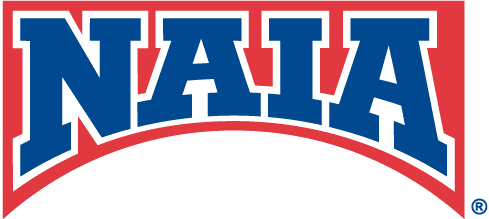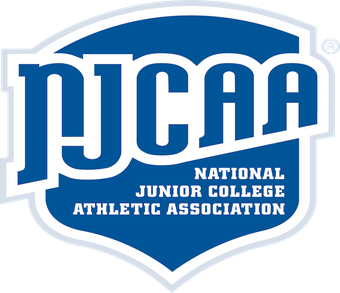TRACK & FIELD SCHOLARSHIPS IN THE UNITED STATES
ATLETISMO (TRACK & FIELD) - MEN
# of Universities
Scholarships/Team
Avg. Players/Team
NCAA Div. I
N. Universidades
270
Máx. Becas/Equipo
12.6
Media Jug./Equipo
38
NCAA Div. II
N. Universidades
175
Máx. Becas/Equipo
12.6
Media Jug./Equipo
36
NCAA Div. III
N. Universidades
296
Máx. Becas/Equipo
–
Media Jug./Equipo
34
NAIA
N. Universidades
149
Máx. Becas/Equipo
12
Media Jug./Equipo
26
NJCAA Div. I
N. Universidades
67
Máx. Becas/Equipo
20
Media Jug./Equipo
17
NJCAA Div. III
N. Universidades
38
Máx. Becas/Equipo
–
Media Jug./Equipo
–
Total
N. Universidades
995
ATLETISMO (TRACK & FIELD) - WOMEN
# of Universities
Scholarships/Team
Avg. Players/Team
NCAA Div. I
N. Universidades
332
Máx. Becas/Equipo
18
Media Jug./Equipo
39
NCAA Div. II
N. Universidades
196
Máx. Becas/Equipo
12.6
Media Jug./Equipo
31
NCAA Div. III
N. Universidades
290
Máx. Becas/Equipo
–
Media Jug./Equipo
29
NAIA
N. Universidades
165
Máx. Becas/Equipo
12
Media Jug./Equipo
21
NJCAA Div. I & III
N. Universidades
68
Máx. Becas/Equipo
20
Media Jug./Equipo
11
Total
N. Universidades
1051
COLLEGE DIVISIONS

NCAA is the largest collegiate athletic association with the largest number of scholarships among its disciplines, as well as the largest athletic facilities. Está compuesta por 3 divisiones diferentes:
Comprising more than 200 large institutions and containing the highest athletic level on average, it often represents the last step before professional competition. Most of the major universities in the USA belong to this division. To be eligible for a scholarship in this division, you must have a high level and well rounded profile.
Composed of smaller universities with respect to Division I (usually between 5000 and 10000 students enrolled), these are institutions where education is more personal and specialized. The level of the average athlete is less than in Division I, but still very high. To that point, it is very common for top Division II universities to be able to beat Division I college teams. To qualify for a scholarship in this division, you must have a high-level athletic profile.
Formed by universities that are defined by their academic reputation and high level programs. They are unable to offer athletic scholarships but they do grant academic scholarships, international student scholarships and loans. They host a variety of athletic programs, but are less professionalized than in the other divisions. This means that the average level is lower compared to Divisions I and II making it ideal for strong students with acceptable sports profiles.

The NAIA is a collegiate athletic association made up of more than 300 institutions, which normally have a lower enrollment and smaller campuses than found in the NCAA. The entry requirements are often more accessible yet it is still made up of universities with high academic and athletic reputations. The level of the average player may be lower when compared to NCAA Division I but at times they can be very similar. There are some really competitive teams found in the NAIA which could compete in any league.

Popularly known as Junior College or Community College, these are 2-year academic programs that serve as a preliminary step to college enrollment. At the athletic level, it serves as a showcase for those athletes who had difficulties in gaining admission to the NCAA or NAIA.
COLLEGE DIVISIONS
NCAA (National Collegiate Athletic Association)
NCAA is the largest collegiate athletic association with the largest number of scholarships among its disciplines, as well as the largest athletic facilities. Está compuesta por 3 divisiones diferentes:
- División I: Formada por más de 200 instituciones de gran tamaño y donde el nivel medio del deportista es más elevado, ya que representa el paso previo a los grandes eventos profesionales. La mayoría de las grandes universidades en USA pertenecen a esta división. Para optar a una beca en esta división, deberás contar con un perfil de gran nivel y polivalencia.
- División II: Compuesta por universidades de menor tamaño con respecto a División I (entre 5000 y 10000 alumnos matriculados), son instituciones donde la educación es más cercana y especializada. El nivel del deportista medio resulta algo inferior, pero sigue siendo elevado. Sin embargo, es muy habitual que las mejores universidades de División II sean capaces de ganar a equipos universitarios de División I. Para optar a una beca de baloncesto en esta división, deberás contar con un perfil deportivo de alto nivel.
- División III: Formada por universidades más definidas en cuanto a programas académicos y para los que no existen becas deportivas, pero sí becas académicas, becas a estudiantes internacionales y préstamos. Poseen competiciones, pero no forman parte de programas tan profesionalizados. El nivel es inferior en comparación con las anteriores, por lo que resulta idóneo para buenos estudiantes con un perfil deportivo aceptable.
NAIA (NATIONAL ASSOCIATION OF INTERCOLLEGIATE ATHLETICS)
NAIA es una asociación deportiva universitaria constituida por más de 300 instituciones, que tienen menos alumnos matriculados que las pertenecientes a NCAA y poseen campus más pequeños. Sin embargo, los requisitos exigidos son inferiores y a ella pertenecen universidades con gran reconocimiento académico y deportivo. El nivel del jugador medio puede resultar inferior si lo comparamos con la División I de NCAA, aunque existen casos muy similares. De hecho, hay equipos realmente competitivos.
NJCAA (NATIONAL JUNIOR COLLEGE ATHLETIC ASSOCIATION)
Conocidos popularmente como Junior College o Community College, son programas académicos de 2 años de duración, que sirven como paso previo a la matriculación universitaria. A nivel deportivo, sirve como escaparate para aquellos deportistas que encontraron dificultades para ser admitidos en NCAA o NAIA.

